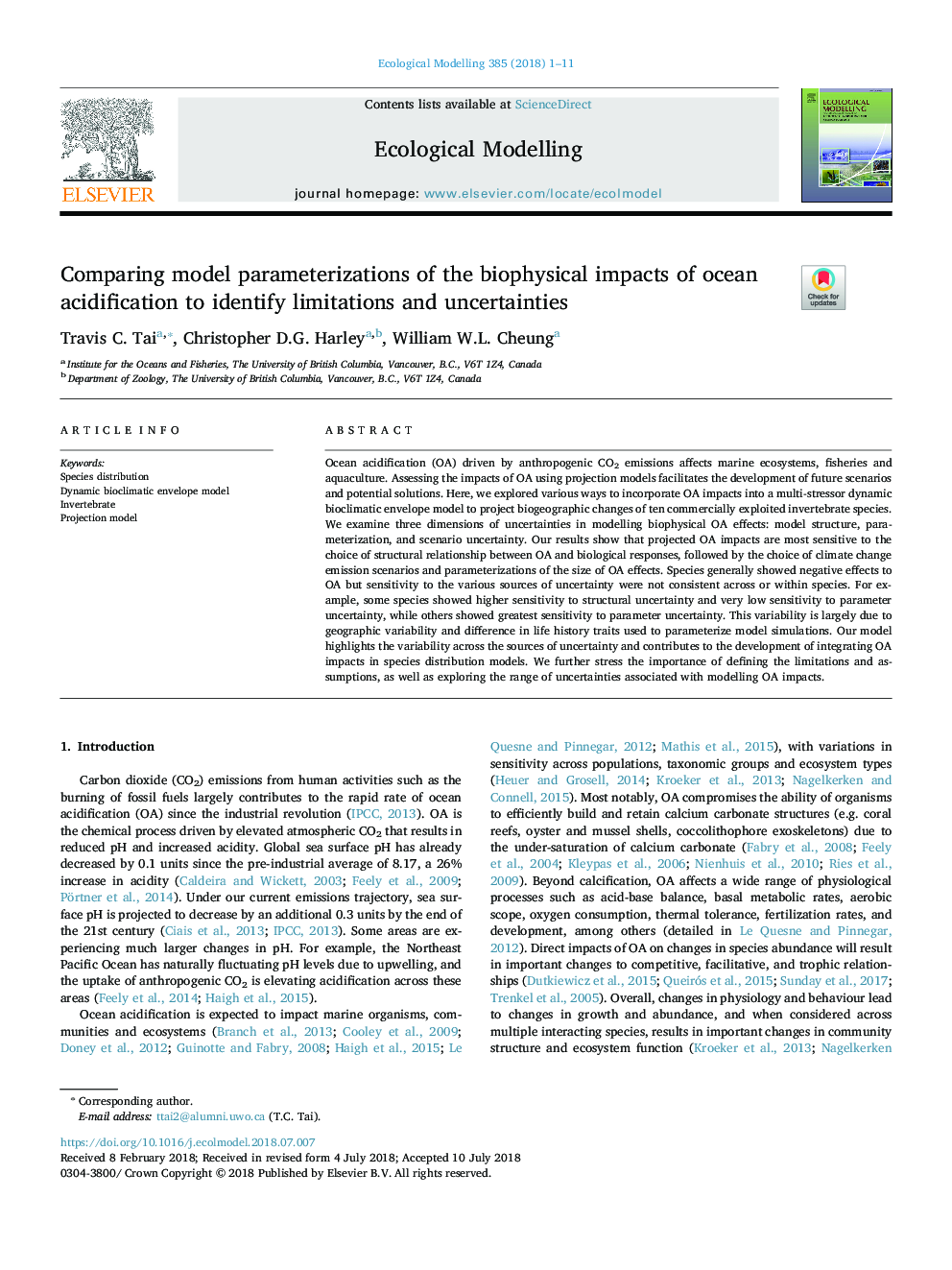| Article ID | Journal | Published Year | Pages | File Type |
|---|---|---|---|---|
| 8845947 | Ecological Modelling | 2018 | 11 Pages |
Abstract
Ocean acidification (OA) driven by anthropogenic CO2 emissions affects marine ecosystems, fisheries and aquaculture. Assessing the impacts of OA using projection models facilitates the development of future scenarios and potential solutions. Here, we explored various ways to incorporate OA impacts into a multi-stressor dynamic bioclimatic envelope model to project biogeographic changes of ten commercially exploited invertebrate species. We examine three dimensions of uncertainties in modelling biophysical OA effects: model structure, parameterization, and scenario uncertainty. Our results show that projected OA impacts are most sensitive to the choice of structural relationship between OA and biological responses, followed by the choice of climate change emission scenarios and parameterizations of the size of OA effects. Species generally showed negative effects to OA but sensitivity to the various sources of uncertainty were not consistent across or within species. For example, some species showed higher sensitivity to structural uncertainty and very low sensitivity to parameter uncertainty, while others showed greatest sensitivity to parameter uncertainty. This variability is largely due to geographic variability and difference in life history traits used to parameterize model simulations. Our model highlights the variability across the sources of uncertainty and contributes to the development of integrating OA impacts in species distribution models. We further stress the importance of defining the limitations and assumptions, as well as exploring the range of uncertainties associated with modelling OA impacts.
Related Topics
Life Sciences
Agricultural and Biological Sciences
Ecology, Evolution, Behavior and Systematics
Authors
Travis C. Tai, Christopher D.G. Harley, William W.L. Cheung,
